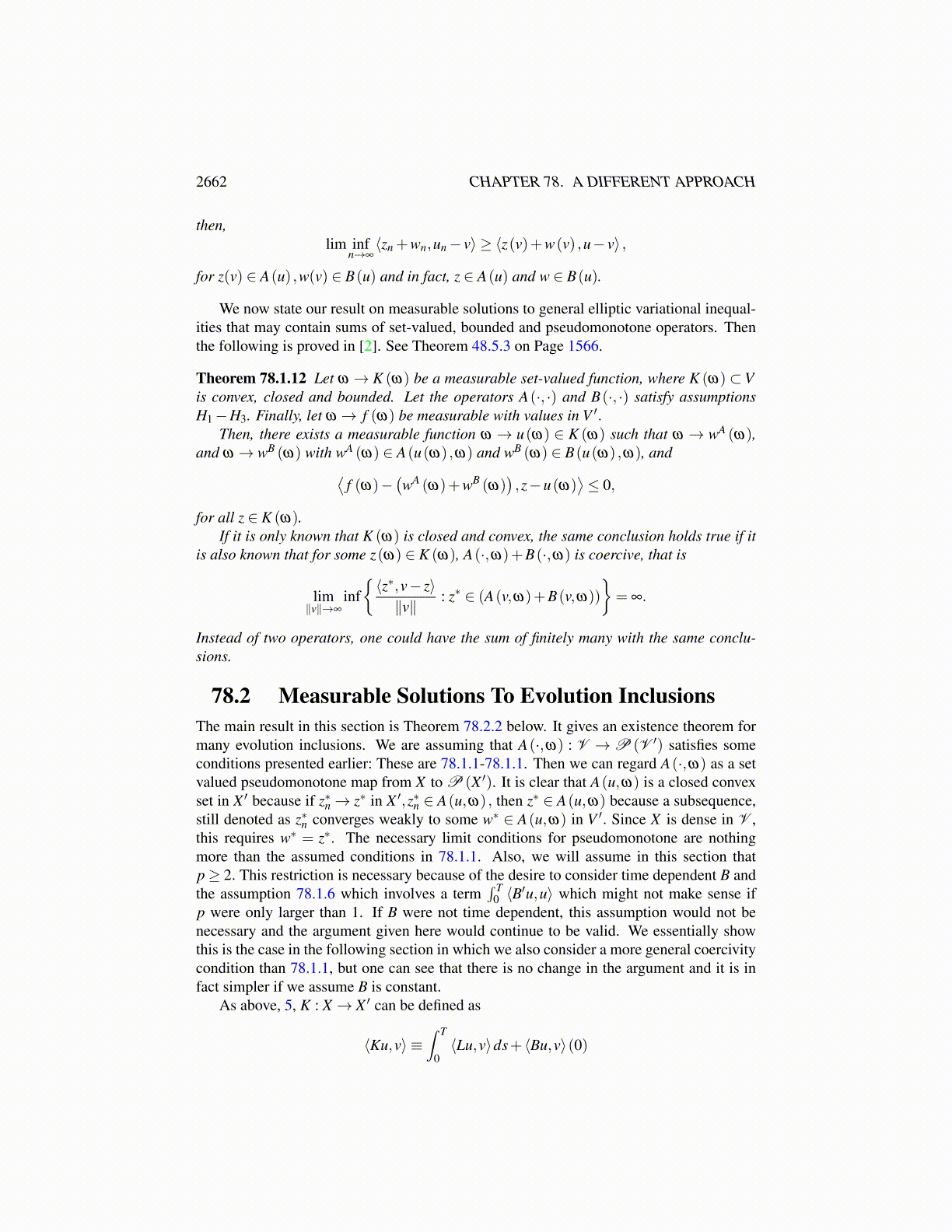
2662 CHAPTER 78. A DIFFERENT APPROACH
for k large enough. Hence
⟨Bu,u⟩(0) = limk→∞
⟨B(tk)u(tk) ,u(tk)⟩< ε
Since ε is arbitrary, ⟨Bu,u⟩(0) = 0.Next suppose ⟨Bu,u⟩(0) = 0. Then letting v ∈ X , with v smooth,
⟨Bu(0) ,v(0)⟩= ⟨Bu,v⟩(0) = ⟨Bu,u⟩1/2 (0)⟨Bv,v⟩1/2 (0) = 0
and it follows that Bu(0) = 0.Note also that this shows that if (Bv)′ ∈ Lp′ (0,T ;V ′) as well as (Bu)′ , then there is a
continuous functiont→ ⟨B(u+ v) ,u+ v⟩(t)
which equals ⟨B(u(t)+ v(t)) ,u(t)+ v(t)⟩ for a.e.t and so, defining
⟨Bu,v⟩(t)≡ (⟨Bu,u⟩(t)+ ⟨Bv,v⟩(t)−⟨B(u+ v) ,u+ v⟩(t)) 12,
It follows that t→ ⟨Bu,v⟩(t) is continuous and equals ⟨B(u(t)) ,v(t)⟩ a.e. t.This also makes it easy to verify continuity of pointwise evaluation of Bu.Let Lu = (Bu)′ .
u ∈ D(L)≡ X ≡{
u ∈ Lp (0,T,V ) : Lu≡ (Bu)′ ∈ Lp′ (0,T,V ′)}∥u∥X ≡max
(∥u∥Lp(0,T,V ) ,∥Lu∥Lp′ (0,T,V ′)
)(78.1.11)
Since L is closed, this X is a Banach space. To see that L is closed, suppose un→ u in Vand (Bun)
′→ ξ in V ′. Is ξ = (Bu)′? Letting φ ∈C∞c ([0,T ]) and v ∈V,∫ T
0⟨ξ ,φv⟩V ′,V = lim
n→∞
∫ T
0
⟨(Bun)
′ ,φv⟩= lim
n→∞−∫ T
0
⟨Bun,φ
′v⟩
(78.1.12)
We can take a subsequence, still denoted with n such that un (t)→ u(t) pointwise a.e. Also∫ T
0
∣∣⟨Bun,φ′v⟩∣∣p ≤ ∫ T
0||un||pV dtC
(φ′,v)
and these terms on the right are uniformly bounded by the assumption that un is bounded inV . Therefore, by the Vitali convergence theorem, and using the subsequence just described,we can pass to the limit in 78.1.12.⟨∫ T
0ξ φdt,v
⟩=
⟨−∫ T
0(Bu)φ
′dt,v⟩
Since v is arbitrary, this shows that∫ T
0ξ φdt =−
∫ T
0(Bu)φ
′dt in V ′